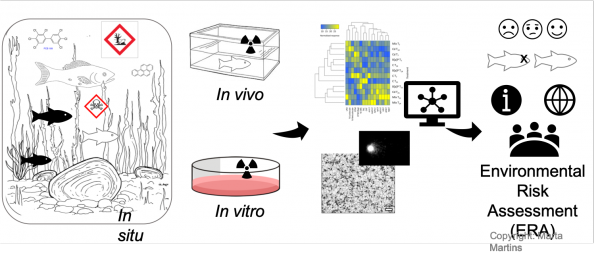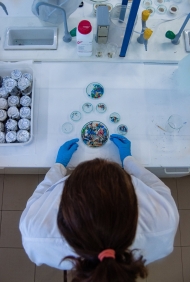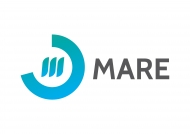Welcome to MARlab!
Marine Research and Environmental Risk Lab (MARlab) brings together transdisciplinary scientists committed to the development of basic and applied research on Ecology, Aquatic Pollution, Environmental Toxicology and Risk Assessment to support policy makers on environmental and human health risk assessment and monitoring programmes.
MARlab comprises four rearing, brooding and bioassay facilities for aquatic organisms, certified by the Portuguese General Directorate of Food and Veterinary (DGAV) and two fully-equipped laboratories, for Marine Biology and Toxicology. MARlab facilities also meet business and industry communities’ needs through analytical, methodological and consultancy services.
MARlab integrates researchers from MARE-NOVA (Marine and Environmental Sciences Centre) at the Department of Environmental Sciences and Engineering, NOVA School of Sciences and Technology (FCT NOVA). MARE has been classified as an ‘Excellent’ R&D Unit by the Fundação para a Ciência e a Tecnologia (FCT).
Our research lines are:
Ecotoxicology and Environmental Risk Assessment
Coordinator: Marta Martins
Main goals:
i) Disclose the potential toxicological mechanisms of priority and emerging environmental contaminants (e.g. metals, organic chemicals, nanomaterials, pharmaceuticals, micro and nanoplastics), and their interaction effects on aquatic ecosystems (from cell to organisms, populations and communities), applying in situ, in vivo (marine organisms and zebrafish models) and in vitro models (fish primary cells and human cell lines);
ii) Develop new knowledge and integrative tools (including new biomarkers and guide-value for contaminant monitoring) to support environmental and human health risk assessment;
iii) Assess the safety of new products to support the blue economy.
The team has expertise on multi-level and integrative approaches from state-of-art genomic and transcriptomic to genotoxicity, histopathology and biochemical assessment.

Marine Litter and Microplastics
Coordinator: Paula Sobral

The MARE-NOVA team has pioneered marine litter and microplastics research in Portugal.
We investigate distribution and abundance on microplastics in water, sediment and biota using the best available techniques to detect and analyse particles and fibers. We have built transdisciplinary partnerships to develop new approaches to better detection and reduction of marine litter and of microplastics and to assess their impacts towards biota. Our work has been included in the national reports on the GES of descriptor 10 within the Marine Strategy Framework Directive.
We are currently investigating inputs of riverine microplastics to the estuaries the oceans and the nearshore and working for the voluntary implementation of prevention and reduction of plastic pellets loss from the industry.
We welcome prospective students and young scientists interested in marine litter and microplastics to work in our lab.
Integrative Taxonomy and Molecular Ecology
Coordinator: Jorge Lobo Arteaga & Cátia Bartilotti
Integrative taxonomy, defined as the science that aims to delimit the units of life's diversity, combines multiple and complementary perspectives, such as phylogeography, comparative morphology, population genetics, ecology, development and behaviour (Dayrat, 2005). During the last years, this approach has become very helpful for the identification of new species, unveiling cryptic speciation, detecting non-indigenous species, used as tool in monitoring studies, etc. Metabarcoding, defined as a rapid method of high-throughput DNA-based identification of multiple species from a complex sample (Cristescu 2014), is today often applied to megafaunal samples. In this research group, we are currently working on marine, estuarine and brackish megafaunal species identification, phylogenetic and phylogeography of selected taxa, and eDNA, for the description of biodiversity.
 |
